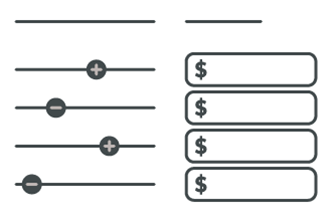Struggling to keep up with reporting and analysis for Amazon? Are you looking to take your Amazon advertising reporting and decision making to the next level? Look no further than the Amazon Advertising API reports. With the rapid evolution of the data and reporting available in the Amazon Advertising API, leveraging Amazon’s API data and advertising platform has become crucial for agencies, aggregators, sellers and vendors of all sizes. With the help of API reports, you can build scalable reporting, gain invaluable insights into your campaigns, understand customer behavior, and optimize your advertising spend. In this guide, we will dive deep into the world of Amazon Advertising API reports, exploring how they can supercharge your day to day processes and larger marketing strategy. From understanding the different types of reports available to learning how to analyze and interpret the data, this article will help equip you with the knowledge and tools you need to put the Amazon Advertising API reports and data to good use.
Why use Amazon Advertising API Reports?
In today’s highly competitive e-commerce landscape, it’s not enough to simply run ads on Amazon. To truly succeed, you need to constantly monitor and optimize your campaigns based on historical and real-time data. This is where Amazon Advertising API reports come in. These reports provide you with detailed information about your advertising campaigns, allowing you to make data-driven decisions and maximize your ROI. By leveraging these reports, you can gain insights into crucial metrics such as customer journeys, keyword performance, search term data, product performance, and advertising opportunities, and campaign costs. Armed with this information, you can make informed decisions about your ad spend, optimize your product listings, and refine your overall marketing strategy.br/>br/>
Understanding the different types of Amazon Advertising API Reports
Amazon Advertising API reports come in various types, each offering unique insights into different aspects of your advertising campaigns. Understanding the different types of reports available is essential to harnessing their power effectively. Let’s take a closer look at some of the most important types of Amazon Advertising API reports and how they can benefit your marketing strategy and reporting processes:
### 1. Leveraging keyword and search term performance reports for optimizing ad campaigns
Keyword performance reports are a goldmine of information when it comes to optimizing your Amazon ad campaigns. These reports provide detailed data on how your ads are performing for specific keywords across the Sponsored Products, Sponsored Brands, and Sponsored Display campaign types.
By analyzing this data across the campaign types, you can identify high-performing keywords that are driving sales and adjust your bidding strategy accordingly. Additionally, you can uncover underperforming keywords and either refine your ad targeting or exclude them from future campaigns. This level of granularity allows you to allocate your ad spend more effectively and increase the chances of your ads appearing to the right audience.
Note that Sponsored Products have migrated to the V3 version of the API as of March 2023, while Sponsored Brands and Sponsored Display largely remain on V2 for reporting data for the time being. At this link, you can see a comparison of the reports available for each ad type, noting that V3 includes all of the same availability for Sponsored Products: https://advertising.amazon.com/API/docs/en-us/guides/reporting/v2/report-types br/>br/>
### 2. Utilizing search term reports for targeted product listings
Search term reports provide insights into the search terms customers are using when they find and click on your ads. It’s important to note that search term level segmentation is currently only available for Sponsored Products and Sponsored Brands campaigns, excluding Sponsored Display campaigns at this point in time. This means you are not yet able to optimize Sponsored Display campaigns by harvesting or negating search terms that customers search in relation to a served Sponsored Display Ad.
For Sponsored Products and Sponsored Brands campaigns, this information is invaluable when it comes to optimizing your product listings and improving your ad targeting. By analyzing search term data, you can identify relevant keywords that are driving traffic and sales. You can then incorporate these keywords into your product titles, descriptions, and backend keywords to increase visibility and improve organic rankings. Additionally, you can identify irrelevant search terms that are wasting your ad spend and add them as negative keywords to refine your targeting further.
For details on the Search Term data available by ad type, check out the link here, noting that Sponsored Products search term reports will reference V3 of the API and show ‘deprecated’ in V2, though the fields available are largely the same: https://advertising.amazon.com/API/docs/en-us/guides/reporting/v2/report-types#search-term-reports br/>br/>
### 3. Analyzing product performance reports for inventory management
Product performance reports provide a comprehensive overview of how your products are performing in terms of sales, impressions, and conversions. By analyzing this data, you can identify top-selling products, monitor inventory levels, and make informed decisions about restocking and inventory management. For example, if you notice a particular product is consistently outperforming others, you can allocate more budget towards promoting it or consider expanding your product line in that category. On the other hand, if a product is underperforming, you can investigate the reasons behind it and take corrective actions such as adjusting pricing, improving product images, or reevaluating your targeting strategy.
To retrieve this data, you’ll be pulling two separate reports – the Advertised product report and the Purchased product report, both of which are linked below. The Advertised product report shows the data for the ASIN advertised in a particular ad unit, including all ad sales attributed to the given ad and advertised ASIN. However, this report does not show which ASINs were purchased after the click of an ad if the advertised and purchased ASIN are not one in the same. For the whole picture, you’ll want to also reference the Purchased product report, which shows the ASINs that were purchased when a SKU other than the one advertised was purchased as the result of a click. Note that the Advertised product report is currently only available for Sponsored Products, while the Purchased product report is available for both Sponsored Products and Sponsored Brands campaigns.
https://advertising.amazon.com/API/docs/en-us/guides/reporting/v3/report-types#advertised-product-reports
https://advertising.amazon.com/API/docs/en-us/guides/reporting/v3/report-types#purchased-product-reports
It’s also worth noting that this type of analysis is greatly helped by integrating with the Selling Partner API, or SP-API, data that shows current inventory levels and organic sales, The process for analyzing across the Amazon Advertising API and the Selling Partner API is a topic for another day: https://developer-docs.amazon.com/sp-api/ br/>br/>
### 4. Tracking advertising cost of sale (ACoS) with campaign performance reports
Campaign performance reports provide a comprehensive overview of how your advertising campaigns are performing in terms of impressions, clicks, conversions, and costs. One of the most important metrics to monitor in these reports is your advertising cost of sale (ACoS). ACoS measures the effectiveness of your ad spend by calculating the ratio of ad spend to sales. Quite literally, it simply divides spend by ad sales, which is the inverse of the common ROAS metric. The metric is useful for Amazon as it clearly shows the margin you’re giving up on each ad sale, and is a good measure of efficiency when every point of margin counts. By tracking ACoS over time, you can identify trends, set benchmarks, and make data-driven decisions about your advertising budget. If your ACoS is too high, you can adjust your bidding strategy, refine your targeting, or experiment with different ad formats to improve your ROI. Conversely, if your ACoS is low, you can consider increasing your ad spend to capitalize on the opportunity and drive more sales.
Campaign performance reports are available for all campaign types of Sponsored Products, Sponsored Brands, and Sponsored Display.br/>br/>
Tips for interpreting and utilizing Amazon Advertising API Reports effectively
While Amazon Advertising API reports provide a wealth of data, interpreting and utilizing that data effectively is key to unlocking their full potential. Here are some tips to help you make the most of these reports:
1. **Set clear goals:** Before diving into the data, define your marketing goals and objectives. Are you looking to increase sales, improve visibility, or expand into new markets? Having clear goals will help you focus on the metrics that matter most to your business and avoid getting overwhelmed by the abundance of data. We typically like to name and structure our campaigns based on the objective we are trying to accomplish with each – i.e. Prospecting, Discovery, Awareness, Return, Conversion, Conquesting, etc. We then label and tag our campaigns with custom MixShift labels that allow us to further segment and analyze performance along the lines of the objective, return goal, products advertised, and more.
2. **Benchmark and track performance:** Establish benchmarks based on historical data and track performance over time. This will help you identify trends, measure the impact of changes, and make data-driven decisions. Regularly reviewing and comparing performance metrics will enable you to spot opportunities and gaps in your marketing strategy. This is still relatively difficult to do as Amazon does not publish specific benchmarking data in the APIs, but it can be gleaned in other ways via the Brand Insights vis the Brand Metrics API data per: https://advertising.amazon.com/API/docs/en-us/guides/reporting/brand-metrics/how-to
3. **Segment and analyze data:** Don’t just look at the overall numbers. Segment your data by different variables such as product categories, campaigns, or time periods. This will allow you to identify patterns, uncover hidden insights, and optimize your campaigns at a more granular level. This is where a consistent labeling and tagging system come in handy. By tagging each campaign with different values, you will be able to easily separate performance by segments that matter such as brand vs. nonbrand performance, targeting types, bid strategies, and just about anything you can think of. You can do this directly in the MixShift platform. Check us out here to find out more: https://mixshift.io/
4. **Experiment and iterate:** Use the insights from your reports to experiment with different strategies and tactics. Test different ad formats, bidding strategies, keywords, and targeting options. Monitor the results and iterate based on what works best for your business.
5. **Stay up to date:** Amazon’s advertising platform and API capabilities are constantly evolving. Stay up to date with the latest features, updates, and best practices to ensure you are leveraging the full power of the Amazon Advertising API reports. The easiest way to do so is to subscribe to Amazon’s RSS Feed for new releases, which can be done here: https://advertising.amazon.com/API/docs/en-us/release-notes/index
Integrating Amazon Advertising API Reports into your marketing strategy
Now that you understand the different types of Amazon Advertising API reports and how to interpret them effectively, it’s time to integrate them into your marketing strategy. Here are a few key steps to get started:
1. **Set up your API access:** To access Amazon Advertising API reports, you’ll need to set up API access through the Amazon Advertising Developer Portal. Follow the documentation and guidelines provided by Amazon to get started here: https://advertising.amazon.com/API/docs/en-us/guides/get-started/overview
2. **Define your reporting requirements:** Determine which reports are most relevant to your business goals. Consider the types of insights you need, the frequency of reporting, and the level of granularity required. This will help you set up your reporting infrastructure and ensure you’re capturing the right data.
3. **Automate reporting:** Leverage automation tools or work with a developer to automate the generation and delivery of your reports. This will save you time and ensure you have up-to-date data at your fingertips whenever you need it. The buy vs. build decision is always a tough one. If you want to avoid the hard work of building your own pipeline, MixShift has an already-done-for you solution ready to go: https://mixshift.io/products/data-studio/
4. **Analyze and take action:** Regularly review your reports, analyze the data, and take action based on the insights gained. Use the tips and best practices mentioned earlier to make data-driven decisions and optimize your campaigns. For out-of-the-box reporting that actually helps you keep your clients, saves tons of hours, and delivers insights you can’t get from the raw data alone, check out MixShift’s Report Center solution: https://mixshift.io/products/report-center/
5. **Iterate and optimize:** Marketing is an ongoing process of experimentation and optimization. Continuously monitor your campaigns, test new strategies, and iterate based on the results. By constantly refining your approach, you’ll be able to maximize your ROI and stay ahead of the competition.
Tools and resources for maximizing the power of Amazon Advertising API Reports
To make the most of Amazon Advertising API reports, you can leverage a variety of tools and resources available. Here are a few to consider:
1. **Amazon Advertising Console:** The Amazon Advertising Console provides a user-friendly interface to access and analyze your advertising data. It offers various reporting options and visualization tools to make data analysis easier per: https://advertising.amazon.com/
2. **Third-party analytics tools:** There are several third-party analytics tools available that offer advanced reporting and analysis capabilities for Amazon Advertising API data. These tools can provide additional insights, automate reporting, and help you uncover hidden trends and patterns. This is where MixShift falls as we build our solutions for Amazon agencies, aggregators, sellers, and vendors.
3. **Amazon Advertising API documentation:** Amazon provides comprehensive documentation and resources to help you understand and utilize the API reports effectively. Refer to the official documentation for detailed information on how to access the reports, interpret the data, and troubleshoot common issues. See all of the documentation right here: https://advertising.amazon.com/API/docs/en-us
4. **Online communities and forums:** Engage with the Amazon seller community and join relevant forums and online communities to learn from others, share insights, and stay updated on the latest trends and best practices. These communities can provide valuable support and advice as you navigate the world of Amazon Advertising API reports. There are a number of great Facebook groups out there to join (one linked below), along with the forums Amazon creates on behalf of sellers per:
https://www.facebook.com/groups/593353220830694/?hoisted_section_header_type=recently_seen&multi_permalinks=2569933019839361
https://sellercentral.amazon.com/seller-forums?ref=spc_pdsr_na_frm_v1_20230508&gclid=CjwKCAjwkeqkBhAnEiwA5U-uM__lBOuww71hce2kmiZPUcEeBg7u3pQde4Aae70qy9e2sjGArbL2YBoCDlcQAvD_BwE
Conclusion
Amazon Advertising API reports are a powerful tool that can supercharge your marketing strategy. By leveraging the insights provided by these reports, you can optimize your ad campaigns, improve your product listings, and make data-driven decisions that drive results. From keyword performance reports to search term data, product performance reports, and campaign performance reports, each type of report offers unique insights into different aspects of your advertising campaigns. By following best practices for interpreting and utilizing these reports effectively, you can unlock the full potential of your Amazon advertising efforts and achieve maximum ROI. So, embrace the power of Amazon Advertising API reports, stay up to date with the latest features and best practices, and take your marketing strategy to new heights!





